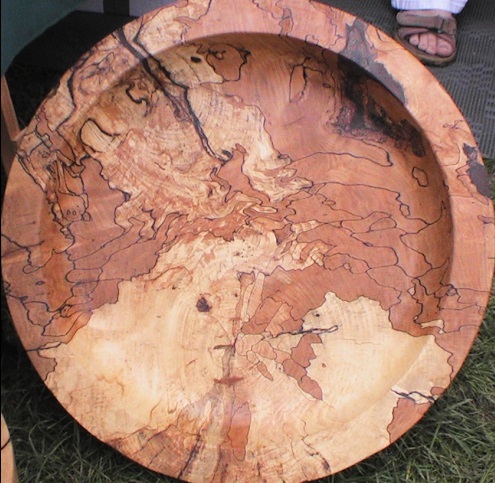 Professor Lynne Boddy FRSB, Cardiff University, discusses one of her favourite subjects: fungus wars. As part of Biology Week, the British Mycological Society‘s UK Fungus Day is hosting events across the UK and Ireland around 10th & 11th October.
Professor Lynne Boddy FRSB, Cardiff University, discusses one of her favourite subjects: fungus wars. As part of Biology Week, the British Mycological Society‘s UK Fungus Day is hosting events across the UK and Ireland around 10th & 11th October.
Fungi rarely live alone, so they frequently encounter other fungi, bacteria and invertebrates, and sometimes vertebrates too. Like animals, fungi can distinguish self from non-self. When one mycelium (the main body of the fungus, comprising a network of fine filaments, termed hyphae) meets another, chemical recognition shows whether it is a different species, a different individual of the same species or, indeed, itself. We can clearly see the location of different individual fungi if we cut a slice from a log. Typically there are lots of continuous lines demarcating columns of decay – called zone lines. These lines vary in colour, depending on which species formed them, but are most commonly dark, though sometimes brightly coloured, e.g. orange. Like the garden fences or walls that surround our homes and gardens, they demarcate the territory of an individual fungus. Often adjacent individual fungi have their own separate walls around their own territory in wood leaving a small space between the two. Amazingly this very narrow ‘no man’s land’ of wood can house many other very tiny mycelia.

Fungal zone lines visible in wood.
When mycelia of different species of fungi meet, they fight, mostly by ‘chemical warfare’ – producing inhibitory chemicals that pass through the air, like the gas warfare of the World War 1 trenches, or that diffuse through the water in the resource in which the fungus is growing. The most common outcomes of these battles are deadlock – where neither fungus gains any headway, or replacement – where one fungus takes the territory of the other. Sometimes, surprisingly, there is mutual replacement, where one species takes some of the territory of the other and vice versa. This brings to mind earlier human battle strategies where armies would line up in front of each other, and one side might punch a hole through the centre of the opponent’s battle line while the opponent came round the edges, or the cavalry on one side of the battle field may have forced its way behind enemy lines, while that enemy pushed its way through on the other side of the battle field.
 Some species are very effective combatants whereas others are poorer. In fact, it is rather like sports leagues where the teams in higher leagues would be expected to beat those in lower leagues, though sometimes there are ‘giant killers’. Continuing the sporting analogy, while the most successful teams are good attack and defence, others are better than one than the other. So too with fungi, though some, e.g. the hairy Stereum, do not manage to gain territory from many other species, it is quite good at keeping other fungi out. Lots of factors can affect the outcome of interactions, such as where they are fighting – in wood or soil – the temperature and water regime, how much nutrient supply is available, whether the available nutrient sources are high quality and whether other organisms are interacting with the main fungal combatants.
Some species are very effective combatants whereas others are poorer. In fact, it is rather like sports leagues where the teams in higher leagues would be expected to beat those in lower leagues, though sometimes there are ‘giant killers’. Continuing the sporting analogy, while the most successful teams are good attack and defence, others are better than one than the other. So too with fungi, though some, e.g. the hairy Stereum, do not manage to gain territory from many other species, it is quite good at keeping other fungi out. Lots of factors can affect the outcome of interactions, such as where they are fighting – in wood or soil – the temperature and water regime, how much nutrient supply is available, whether the available nutrient sources are high quality and whether other organisms are interacting with the main fungal combatants.
Who would ever have thought that so much was going on in a piece of rotten wood!
Find out more about UK Fungus Day and Biology Week 2015.

